Table of Contents
Touring bikes are not all designed with the same purpose in mind, in the same way that cars can be optimised to suit high-performance (sports cars), off-road tracks (4x4s) or utility (vans).
Yep, like cars, there are lots of subcategories of touring bike that are all optimised for slightly different purposes. By getting the bike that best matches your needs, you can make your bike tours easier! It took me a while to understand each category, but having written extensively about touring bikes for a while now, I will explain them all to you.
Other Linking Articles:
– I discuss frame geometry in this article for those who are unfamiliar with what it all means.
– If you’re interested in the different touring bike manufacturers, check out the Complete List of Touring Bikes Available.
Long-Distance Touring Bikes
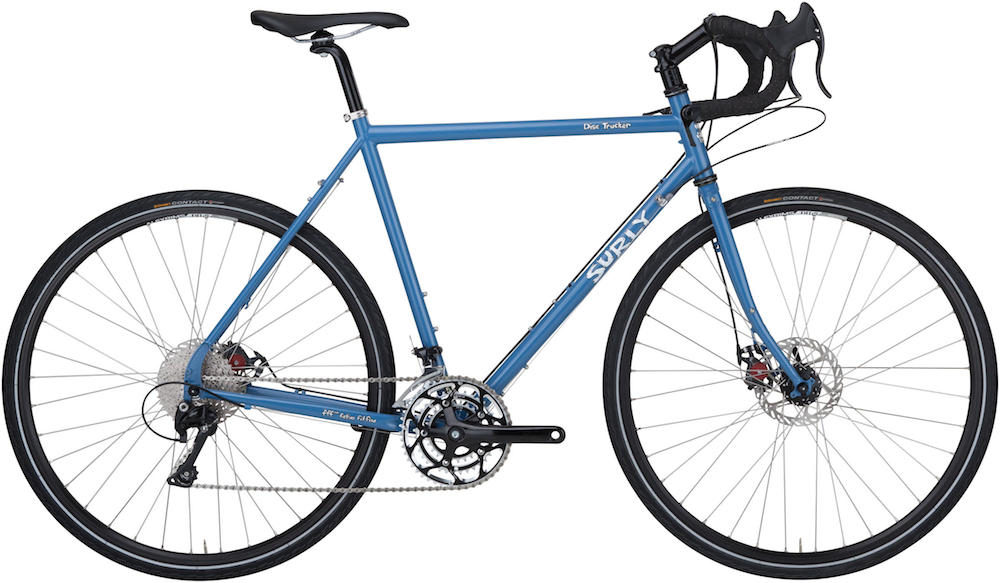
Characteristics
These touring-specific bikes are designed around long-distance bike travel, making them very capable at handling heavy loads on all types of terrain. Most often, steel long-distance frames are stiffer than anything else available because they use heavier frame tubing in larger diameters.
Long Distance bikes have a wide range of gear ratios to get you up the steepest hills, provision for a front rack, comfortable seats, three bidon cage mounts, long chainstays for ample heel clearance of your rear panniers, and a long, stable wheelbase. In addition, you will be able to mount touring specific tyres over 40c (700c) or 2.0″ (26″) in size. Long Distance touring bikes are what I recommend for big tours.
Geometry
The geometry charts show slack head and seat tube angles, high trail, long headtubes, long chainstays and low bottom brackets.
Example: Surly Disc Trucker
Light Touring Bikes

Characteristics
Light tourers use a tweaked road bike geometry to produce a fast bike that takes racks and panniers. Given the narrow tyres and lightweight nature of many of the parts, they are best suited to road-only use. Typically you will find 700c wheels with narrow tyres, similar geometry to a road bike and higher gear ratios – all of which are perfect for sealed roads. Be aware that there is often limited space for wide tyres/mudguards, and that there is often no small chainring ratio for steep climbs.
Geometry
The geometry charts show that almost all measurements (head angle, seat angle, chainstay length, fork trail) are somewhat halfway between that of a long-distance touring bike and a road racing bike. They share a lot of geometry characteristics and handling features with cyclocross/gravel bikes.
Example: Sabbath Silk Route
Trekking Bikes
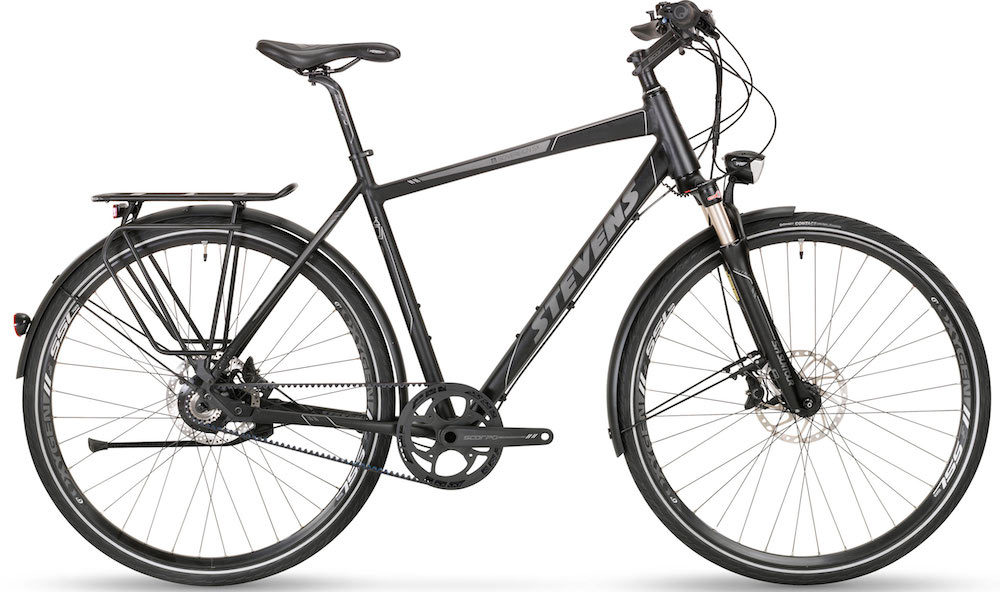
Characteristics
Based on a ‘hybrid’ bicycle, this style of bike is most popular with European brands. They are often designed around light loads, equipped with a rear rack only, a suspension fork, an aluminium frame and gear ratios suited to sealed roads and bicycle paths. Trekking bikes can be as fast as ‘light touring’ bikes, but with the added bonus that they are more upright.
Geometry
The geometry charts show slack head and seat tube angles, high fork trail, long headtubes, long chainstays and low bottom brackets.
Example: Stevens Sovereign SX
Full-Suspension Touring Bikes
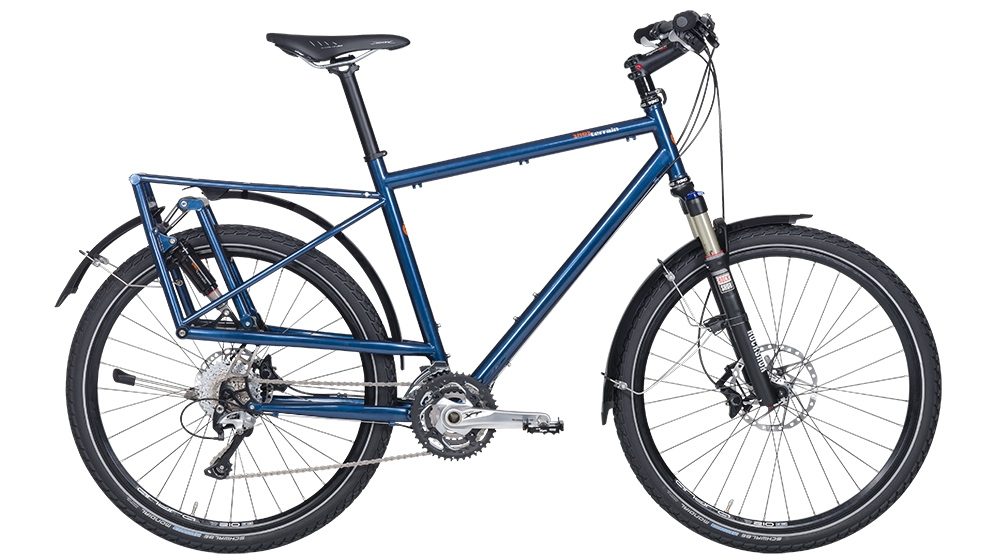
Characteristics
This touring bike subcategory is essentially a full-suspension mountain bike with tweaked angles and a higher front-end. With racks built above the suspension, it allows your pannier weight to be ‘sprung’ with you. The result? Suspension dampening that works effectively.
Example: Tout Terrain Panamericana
Long-Tail Cargo Touring Bikes
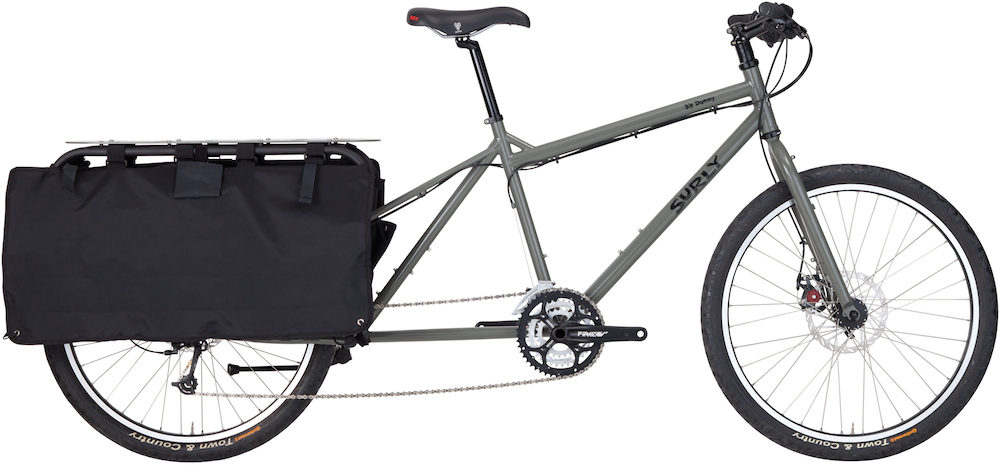
Characteristics
Long-tail cargo bikes are great for big loads, carrying oddly shaped objects, or transporting children. You can squeeze two children’s seats on the back tray as well as loads of gear! I’ve seen cargo tourers carrying para gliders, surfboards, or simply cycling with extra panniers.
Example: Surly Big Dummy
Recumbent Touring Bikes
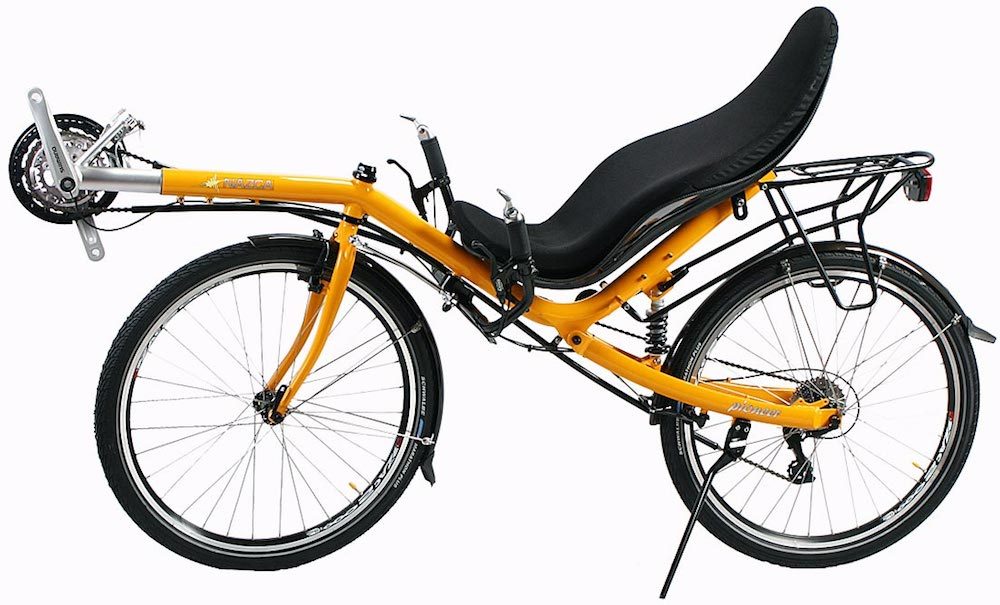
Characteristics
No sore bottoms, sore backs or
sore shoulders? Sounds pretty good to me. There are disadvantages to riding recumbent too: when climbing steep hills you cannot use your body weight to push the pedals down, riding in traffic you are far less visible to cars, and it can be harder to obtain spare parts.
Example: Nazca Pioneer
Folding Touring Bikes
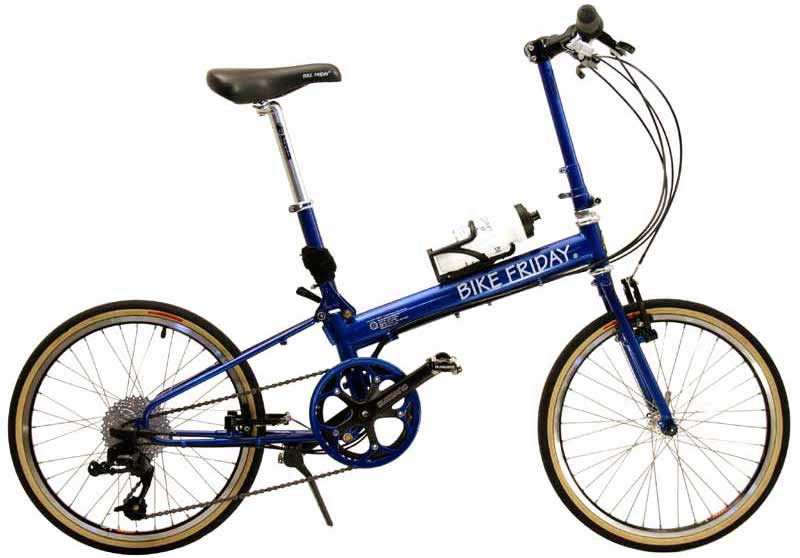
Characteristics
Folding bikes can make brilliant touring bikes. There have been many times where we’ve needed to use trains, get in trucks or hitchhike where we wished our bikes just folded up. Dealing with public transport is without doubt the most stressful time when we’re travelling.
Example: Bike Friday New World Tourist
Tandem Touring Bikes
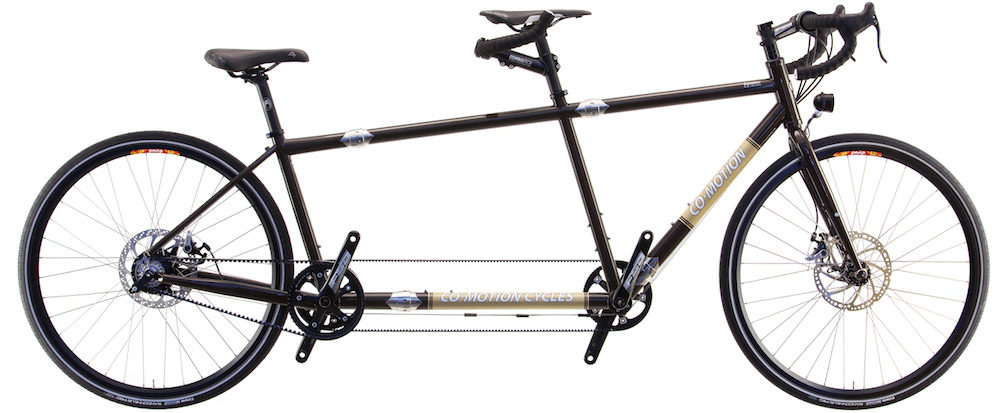
Characteristics
I originally ignored the idea of touring on a tandem with my partner, but the more we rode regular touring bikes separately-but-together, the more we wanted to switch to a tandem. Tandems are faster, more social, good for inexperienced cyclists (at the rear) and great for couples with a large difference in speed/ability. Note: Tandems also come as folding, recumbent and semi-recumbent bikes.
Example: Co-Motion Equator
Other Categories – Road Touring
Cyclocross Bikes
A bicycle marketed at ‘cyclocross’ can make a great touring bike, as the geometry is almost the same as a ‘light tourer’ – albeit with shorter chainstays. Cyclocross bikes are best used with light loads given they have lightweight parts and a gear range that lacks low end gears. Many people swap out the drivetrain to something with a wider gear range. Example: Kona Jake the Snake.
Gravel Bikes
Over the past couple of years, the bicycle industry has created this “new” category. Gravel bikes essentially have the same geometry as ‘light touring’ bikes, and some even have eyelets for a rear rack. The thing that makes them different is that they’re built lightweight, and hence aren’t reinforced for heavy pannier loads… so again, light loads only. Example: Co-Motion Klatch.
Randonneur/Audax Bikes
Given that you can ride a brevet/randonee/cyclosportive event on almost any bike, randonneur/audax bikes as a marketed product aren’t too common. In fact, most bikes found with this name attached are custom builds. The current trend is to use 650b wheels and wide tyres to maximise rider comfort. Example: Soma Grand Randonneur.
Road / Endurance / Sportive / Gran Fondo Bikes
Road bikes (and their subcategories) can be great for lightweight road touring. You can use bikepacking bags to support a minimal load if you need to. ‘Sportive’, ‘Endurance’ and ‘Gran Fondo’ marketed bikes include minor design and geometry changes to optimise comfort over a ‘race’ road bike, and even have a nice wide spread of gears. Example: Cannondale Synapse.
Other Categories – Off-Road and Adventure Touring
29″ Touring Bikes
This relatively new category of touring bike is essentially a 29er (700c) mountain bike with a higher front end and provision for racks, lights and water bottle cages. The advantage with these bikes is that you can fit 2.4″ mountain bike tyres (great on rough roads) and still have lots of clearance for mud. Examples: Salsa Fargo, Surly Ogre, Co-Motion Divide.
Mountain Bikes
A typical mountain bike, most noticeable by its front suspension fork, can be used as a dedicated touring bike. But be aware that mountain bike frames and parts can be designed around strength-to-weight, rather than outright stiffness, so light loads are recommended. Example: Jamis Dragon 650b.
Expedition Bikes
Expedition bikes are as close as touring bikes get to mountain bikes. They are specially designed to take on the worst conditions (snow, ice, mud, sand, corrugations) in the most remote environments. Although almost any long distance touring bicycle can be considered an ‘expedition’ bicycle (given their relatively bombproof part spec), expedition rigs take it up a notch again. They typically use 26″ wheels, 2.00″+ tyres, flat handlebars and sometimes Rohloff hubs. Example: Thorn Raven Sterling.
Fat Bikes and Plus Bikes
What started off as a novelty has really taken off in the last few years. Fat and Plus bikes are most notable by their 3.0-5.0″ tyres which are capable of snow and sand riding in places that haven’t been explored by bike before. They are now being picked up by those adventurous enough to take on deserts and snowfields! Example: Surly Moonlander.
For More Examples of Touring Bikes, Check Out The Complete List of Touring Bicycles Available.


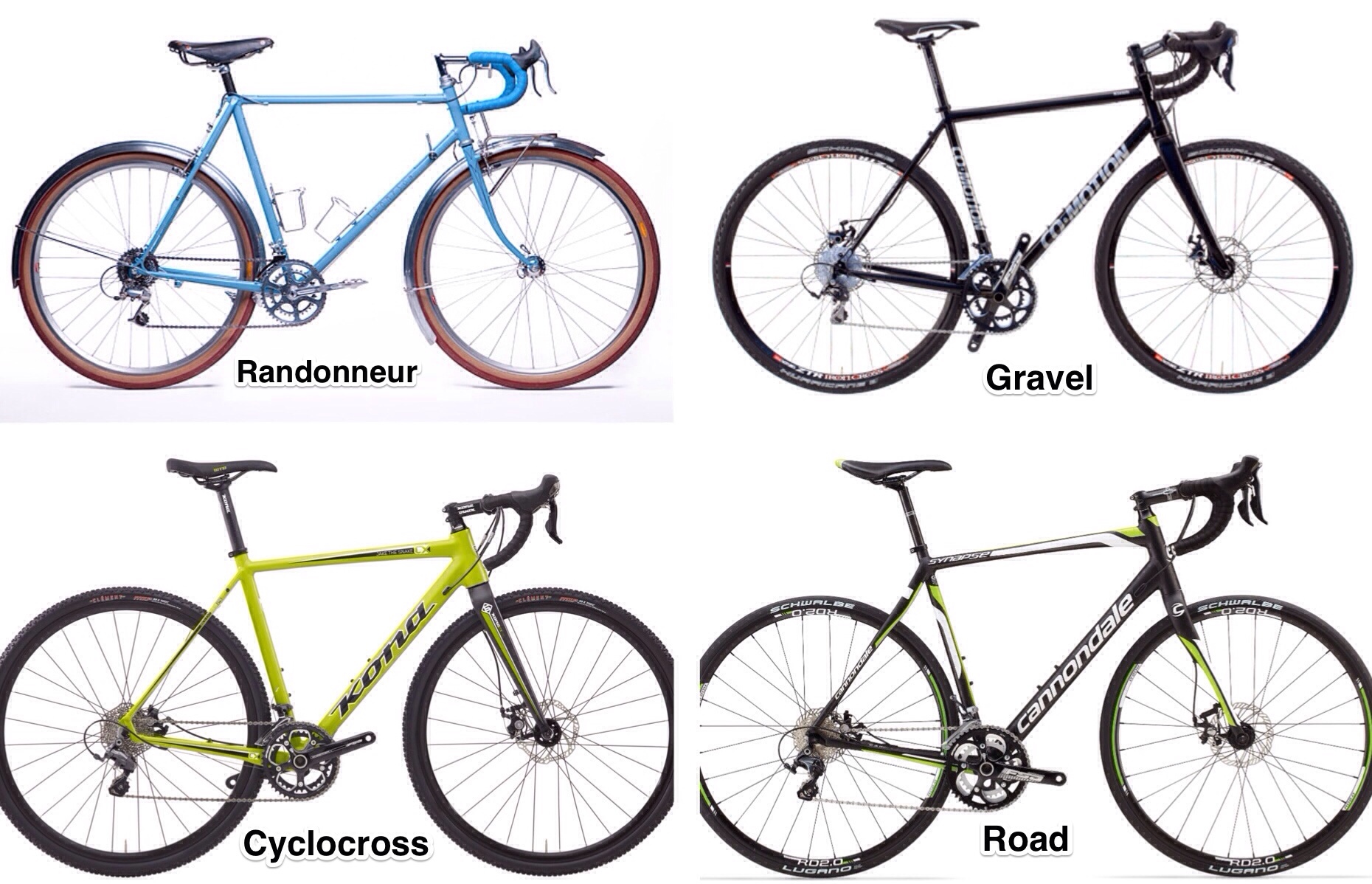
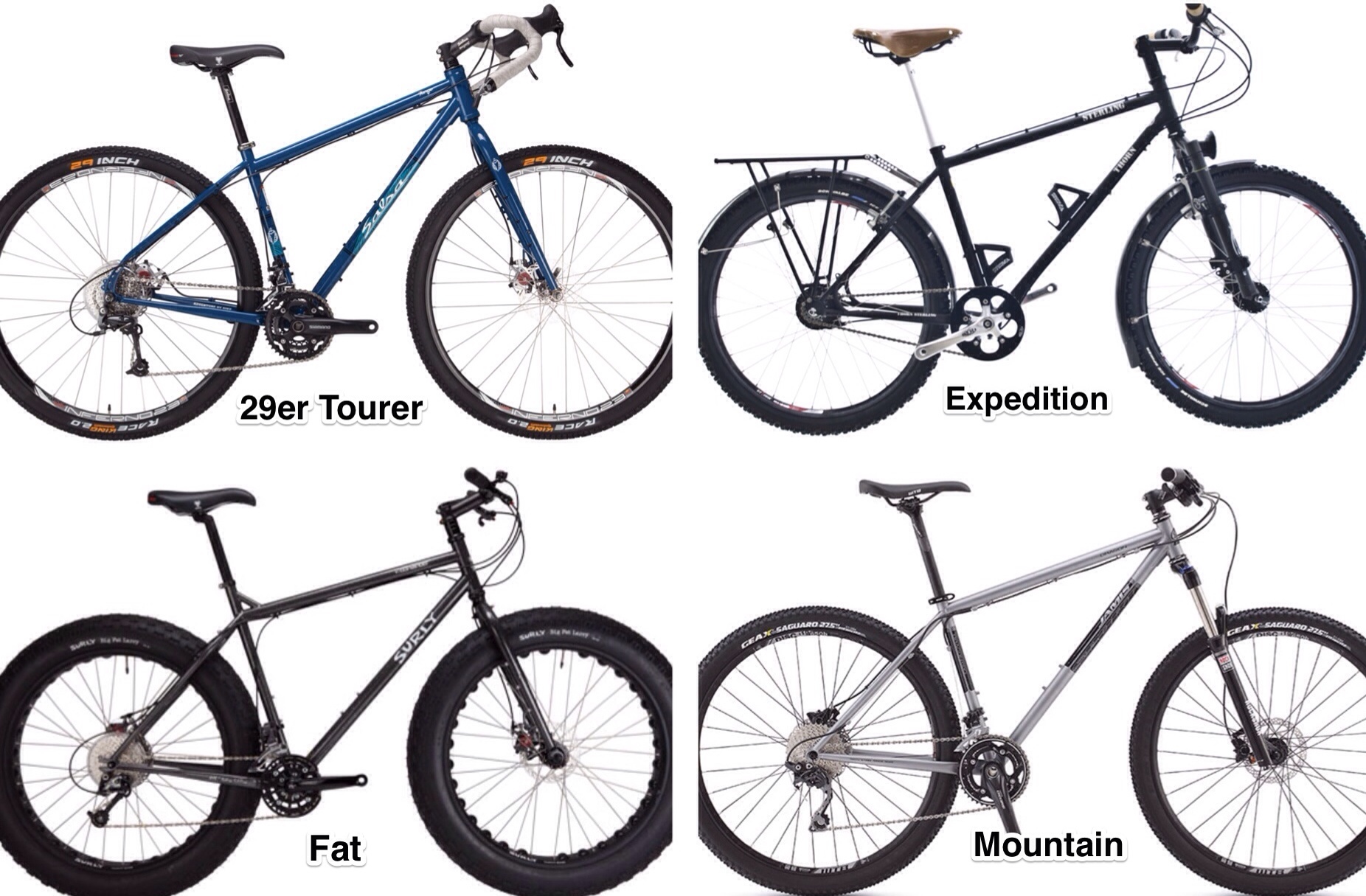
With reference to “Have we missed any categories?” As a 63 year old going on 18 I had to think carefully about my next touring bicycle. I recently bought a HP Velotechnik Gekko tricycle from http://www.fairweathercycles.co.uk/ The main reason was balance, sad to say that as you get older balancing on two wheels can be a problem. BTW a great website.
In respect to recumbent touring bikes if you take a look at Crazy Guy On A Bike you will one of it not the most popular recumbent for touring is a long-wheel base bike such as the Easy Racer Tour Easy or Gold Rush Replica. These bikes having said that are much harder to come by in Australia and importation while possible is expensive.
That said an interesting read. Thanks for posting it.
I feel that the bikes you have shown are not the right geometry for touring. The best geometry is upright for comfort and being able to see the view. Drop bars are for racing and are not comfortable. This is a picture of my bike for touring its a surly ogre with raised handlebars, which i built myself. I think it would come under the “custom” category, more purist i believe 😉
Hi John. There’s definitely no “right” geometry for touring bikes! Everybody is different and touring cyclists tend to like all kinds of setups. I’m really glad you’ve got your bike setup the way you like it, but it isn’t for everyone. I use road handlebars on many of my bikes, which I find the most comfortable. My handlebars are also much lower than most because I am rather flexible and have a strong core strength. It’s worth noting that it’s possible to modify almost all of the setups on the above touring bikes to get the bars higher or lower. Alee
Hi Alee, I really like your website, its a great resource. I think you are right, everyone has their own preference for there ride, which is why I would like to see a custom category. I feel there is a lot of trickle-down from the popularity of racing bikes (e.g. in the Tour de France) which do not suit touring. If you are sat for 10 hours in the saddle it is essential that you find the optimum riding position, I do not think that is crouched down with your bum in the air, for one it puts weight on the arms creating arm ache and two it places less weight on the sit bones and more on the inner thigh and crouch, which is soft tissue and becomes painful after a while and three you cannot see the view 🙂
You are absolutely right John. Too much racer influence in cycling, especially in US and Britain.
Thanks for the awesome article.
We’ve spent hours and hours pouring over all the advice out there to try to find the best bikes for our cycle from Alaska to Argentina via the great divide, beginning in a couple of weeks time. We had planned to dip into the already tiny trip budget to buy a couple of Surly Trolls or Ogre’s however we’ve just been offered full sponsorship on a couple of Romet mountain bikes (I believe of our choice – still confirming) and could use the IBEX to lug along our stuff. Given we’re pretty budget sensitive but could fork out for a couple of Surly’s if absolutely necessary, please could you comment on what you think the best course of action is? I know people have done the Great Divide on penny farthing, and unicycles and so it’s ‘possible’ to do it on anything, but would the Surly’s really be worth spending a couple of grand more over Romets with a trailer?
Finally, the only take 26″ wheels or you’ll be stuck without parts for ages brigade has somewhat got to us but we’ve seen loads of people doing the same trip with 29ers. Does anyone know how available parts for 29ers are in Latin America
Cheers